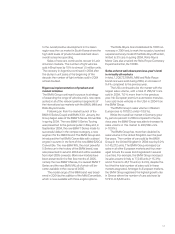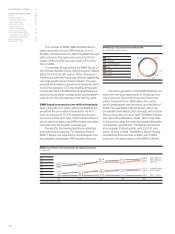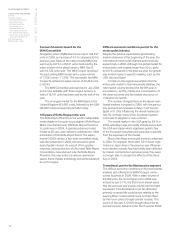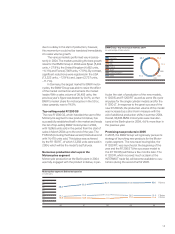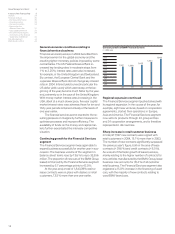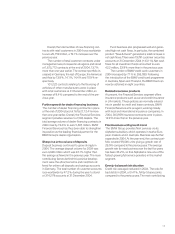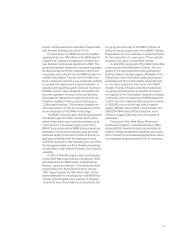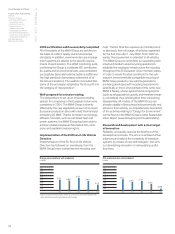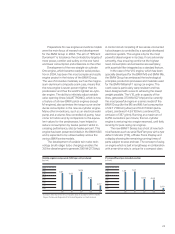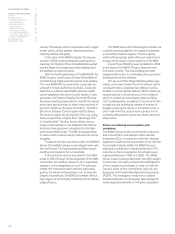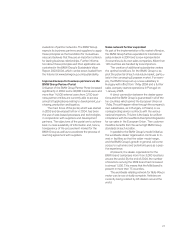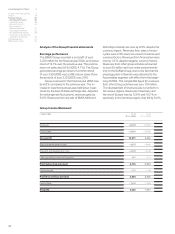BMW 2004 Annual Report Download - page 22
Download and view the complete annual report
Please find page 22 of the 2004 BMW annual report below. You can navigate through the pages in the report by either clicking on the pages listed below, or by using the keyword search tool below to find specific information within the annual report.21
Activity Vehicle was further extended in September
with the start of production of the X3 2.0i.
In recent years, the BMW Group has invested
approximately euro 100 million in the BMW plant in
Landshut to construct a magnesium foundry; the
new facilities commenced operation in 2004. The
group has therefore created the necessary capacities
for serial production of the magnesium-aluminium
composite crank case for the new BMW straight-six
cylinder Otto engine. A further euro 10 million has
been invested to construct a new production building
in Landshut for replacement engine production. A
logistical and assembly system aimed at maximum
flexibility and two newly designed cold engine test
benches represent the heart of the new facilities.
Specialists for replacement engine production are
therefore capable of setting up and testing up to
1,200 engine versions. The number of engine ver-
sions will continue to rise as a consequence of the
recent expansion of the BMW model range.
The BMW Group has been manufacturing petrol
and diesel engines in Steyr, Austria, for 25 years;
almost three billion euro have been invested so far
in this location. The largest engine plant of the
BMW Group is also where BMW diesel engines are
developed. During this anniversary year, the most
extensive single construction project at this site to
date was completed with the opening of a new
37,000 m2production hall, expanding the size of the
site by approximately one third. Flexible processing
centres allow a high degree of product and capacity
versatility.
A total of 146,000 engines was manufactured
at the Hams Hall engine factory in England in 2004
and delivered to the BMW plants in Regensburg,
Munich, Leipzig and Rosslyn. This means that total
engine production at this location since January
2001 edged towards the half-million mark. As the
plant responsible for the production of all BMW four-
cylinder petrol engines with a capacity of between
1.6 and 2.0 litres, Hams Hall has contributed to the
on-going success story of the BMW 3 Series as
well as to the successful start of the BMW 1 Series.
Preparations are now underway to equip the factory
for the production of a new series of four-cylinder
engines to be used in future MINI vehicles.
In April 2004, production of the MINI Convertible
commenced at the MINI plant in Oxford. The inte-
gration of the new model into existing production
facilities reflects the high degree of flexibility of the
Oxford plant, since the body in white, painting and
assembly work for the Convertible is all performed
on the same production lines as for other MINI
models. Thanks to flexible work-time models and
on-going improvements in production processes,
the capacity of the Oxford plant has been increased
continually since the beginning of MINI production
in 2001, from the original annual production volume
of 100,000 units to a new high level of approxi-
mately 189,000 units in 2004. For this reason, the
500,000th MINI rolled off the production line in
Oxford in August 2004 after only three years of
operations.
Production of the Rolls-Royce Phantom in
Goodwood, England, increased sharply in 2004,
allowing British manufacturing to demonstrate its
tradition of high standards and flexibility, particularly
when it comes to personalised specifications, which
are requested by approximately 60% of customers.


